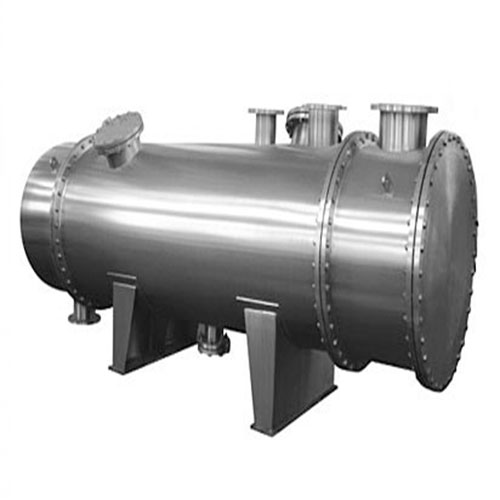Shell and Tube Heat Exchangers:
Shell and tube heat exchangers are commonly used in oil refineries and other large chemical processes. In this model, two separated fluids at different temperatures flow through the heat exchanger, one through the tubes (tube side) and the other through the shell around the tubes (shell side). Several design parameters and operating conditions influence the optimal performance of a shell& tube heat exchanger. This model shows the basic principles of setting up a heat exchanger model. It can serve as a starting point for more sophisticated applications involving parameter studies or additional effects like corrosion, thermal stress, and vibration.
Image:

Process:
There can be many variations on the shell and tube design. Typically, the ends of each tube are connected to plenums (sometimes called water boxes) through holes in tube sheets. The tubes may be straight or bent in the shape of a U, called U-tubes. In nuclear power plants called pressurized water reactors, large heat exchangers called steam generators are two-phase, shell& tube heat exchangers which typically have U-tubes. They are used to boil water recycled from a surface condenser into steam to drive a turbine to produce power.
Shell and tube heat exchanger is named for its two major components round tubes mounted inside a cylindrical shell. The shell cylinder can be fabricated from rolled plate or from piping (up to 24 inch diameters). The tubes are thin-walled tubing produced specifically for use in heat exchangers. Other components include: the channels (heads), tube sheets, baffles, tie rods & spacers, pass partition plates and expansion joint (when required). Shell & tube heat exchanger designs and constructions are governed by the TEMA and ASME codes.
Features:
- High thermal efficiency
- Unique bundle & baffle system
- FEP or “Q” Series tubing
- CPVC shell material.
- Low Density and High Strength
- Excellent Corrosion Resistance
- Good resistance to effect of heat
- Excellent Bearing to cryogenic property
- Nonmagnetic and Non-toxic
- Good thermal properties
- Low Modulus of Elasticity
Advantages:
- Low investment, operation and maintenance costs.
- Highly efficient heat transfer (K- values on average 3-5 times higher than in case of bare-tube heat exchangers).
- Asymmetrical flow gap available for the most cost effective solution.
- Use of smallest temperature difference </= 1°C
- Up to 75% less space required.
- Self-cleaning effect due to highly turbulent flow behaviour
- Future additional capacity is possible by fitting extra heat transfer plates
- Double gasket with leak groove gives high safety with regards to media mixing.
- Easy to open/clean
- Low operating weight/ low liquid content.
Applications:
- Chemical industry
- Petrochemical industry
- Machining field, Automobile field,
- Desalination of sea water
- Textile printing and dyeing
- Mobile phone component field.

